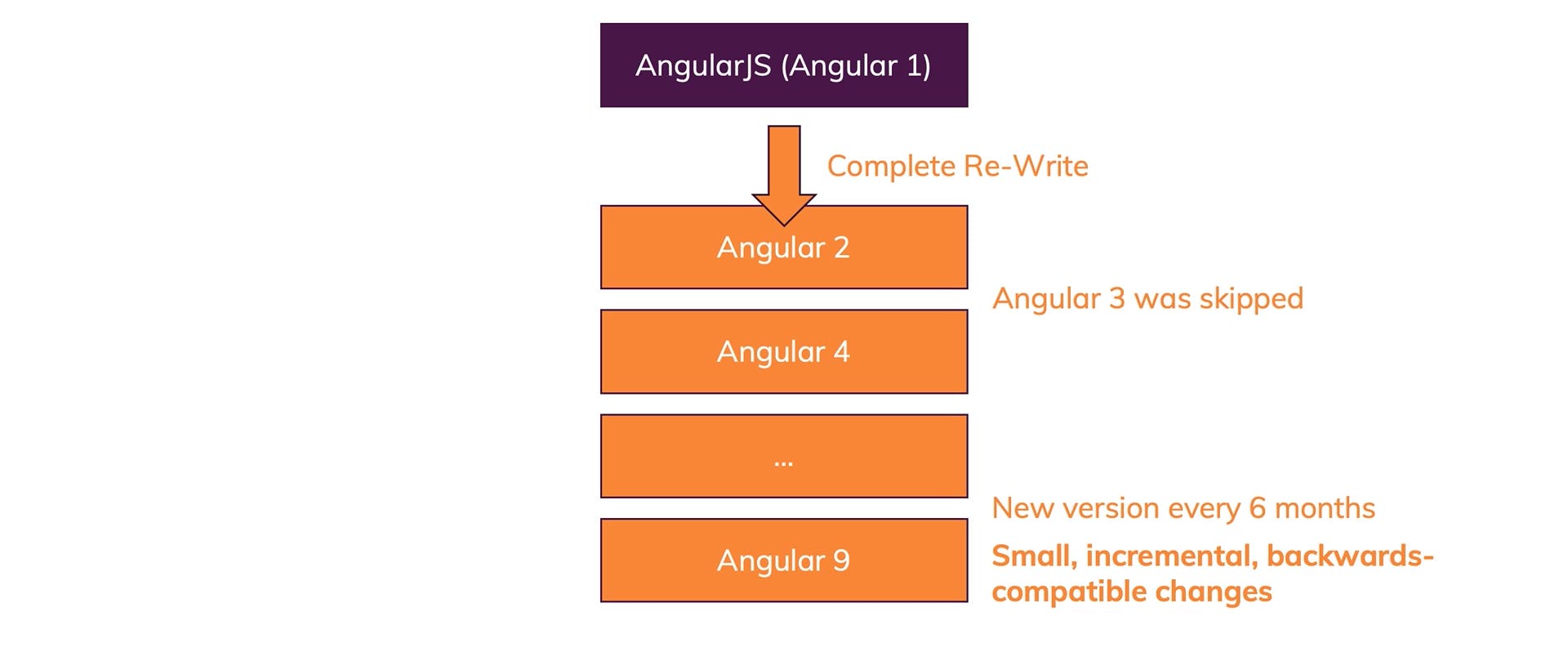AngularJS vs Angular 2 vs Latest Angular Version : Understanding Angular Versioning
Hello there!
Angular makers are so much fast in terms of releasing new versions. In other terms, for every six months there will be a new Angular version released. So, if you plan to start learning Angular version X lets say, chances are that by the time you understand everything, there will be a new version X+1 in the market.

So, how does this mean to an individual who is planning to start learning Angular today. Does that means for every six months you need to learn the framework again? Does the new version takes lot of learning curve? Lets find out in this article.
Spoiler alert!
If you say YES to the above questions, hmmm.. you might be wrong!
Why different versions?😵
Now, one thing that can be confusing when you're getting started with Angular is the amount of Angular versions you find out there. So to start off, we'll have a look at the different versions and how they are connected.
Spoiler, it does not.
So we had Angular 1 or AngularJS. It was released a couple of years ago (2010), and Angular 1/AngularJS was a big new thing back then. Now, no one are supposed to use Angular 1 though, because whilst it was the big new thing, it also had some issues that could lead to worse performance in bigger applications and so on. This version of Angular, Angular one is nowadays referred to as AngularJS, written like this. So if you see people write AngularJS in some internet forum, on Reddit or anything like that, they are most likely referring to Angular 1, which is totally different to the Angular version you're learning about today.
Because there was a complete rewrite of the Angular framework between Angular 1 and Angular 2. Angular 2 was released in 2016, and it was rewritten from the ground up. It works totally different than Angular 1 to fix all the issues Angular 1 had.
Now, since then, since that initial release of Angular 2, we had a couple of other versions of Angular, with Angular 4, Angular 3 was skipped for internal reasons, so that version number was skipped. We had Angular 5, 6, 7, and now we have Angular 11.

(Please note that the latest version is Angular 11)
Why do we have all these Angular version numbers? Does it mean that Angular was reinvented eight times since Angular 1?
No, this is not the case. Instead, since the release of Angular 2, the Angular team simply adheres to a versioning scheme where a new version of Angular is released every six months.
Now that new version, however, is not a complete rewrite, it does not change everything.
In fact, most updates change almost nothing, only some behind the scenes stuff or add some new features without breaking existing features.
Indeed
Angular 11is pretty much the same asAngular 2.
But when we have a look at the core syntax and at the philosophy and so on, nothing changed since Angular 2. Indeed, if you learned Angular 2 in 2016, and you then slept for three years, you can still use the exact same syntax. Some minor things changed. But overall, it's the same framework.
We have small incremental backwards compatible changes between these versions. It's simply just a commitment which the Angular team made to release such a major new version every six months, it does not break or change everything every time it's released.
And therefore AngularJS, this version 1 thing, is totally different. And then what we just referred to as just Angular, Angular two, four, five, six and so on, this is all just Angular.
Conclusion
As a learner, you shouldn't really bother about the version because in six months it will be outdated anyways. Instead, it's just Angular. We just will see small improvements over time. That's the idea behind these versions.

